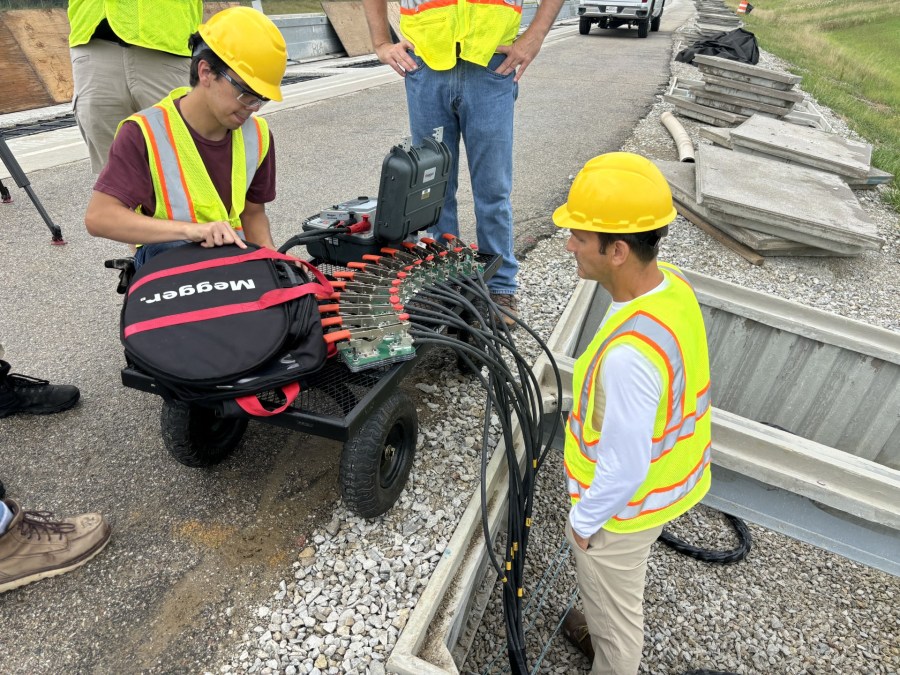WEST LAFAYETTE, Ind. (WXIN) — A first-of-its-kind “Electrified Roadway” in West Lafayette is getting closer to being tested.
Purdue and INDOT have been working on a joint project since 2019 to create a road that can charge electric vehicles.
”What was science fiction 20 years ago is present now,” said Steve Pakarek, a professor of Electrical Engineering at Purdue University.
Over the last several months, INDOT and Purdue crews have been installing electric coil in the US 231 in West Lafayette.
Patches of the road have been dug up and the coils have been placed inside. Crews are now getting ready to fill the patches with cement.
”Now we’re just going through and we’re covering with the pavement leveling that out and having that almost ready to where it could be drivable in the very near future,” said Blake Dollier with INDOT.
Pekarek and his team tested the newest of the installed coils on Wednesday.
The idea is electric semi trucks will be able to drive at 65 miles per hour and a magnetic field will transfer energy from the coils to a receiver on the truck. The road will be the power source for the truck.
”For a fully loaded semi vehicle, 80,000-pound vehicle going 65 miles an hour,” Pekarek said. “You’re talking about 200 kilowatts you have to deliver and that’s a lot of power. Like on the order of 100 homes worth of power that you’re continually delivering.”
The hope is for the technology to be installed along major truck routes and reduce the two major hurdles to making EV semi-trucks more practical.
”You would place these coils within the roadway and then all of the EVs would reduce their battery size and reduce the range anxiety,” Pekarek said.
Right now, Pekarek said batteries for EV semis cost around $250,000, but he said the price and size of the battery would greatly decrease if these electrified roadways were used.
”If you do this in the roadway we are projecting out that you would prevent that by a factor of 10,” he said.
If the road this truck was traveling on had these coils to power EVs, you could essentially forget about the battery in the truck.
“We’re trying to deliver the power to the propulsion system and any auxiliaries associated with the vehicle so you can forget the battery,” Pekarek said. “You’ll need a battery to get on the roadway, you’ll need a battery to get off the roadway, but while it’s on the roadway the battery isn’t needed.”
As for safety concerns, Pekarek said the energy is confined between the coils on the road and the receiver at the bottom of the truck.
“The exposure to the magnetic energy is constrained between the roadway and the vehicle base,” Pekarek said.
If this technology were to be implemented in roadways across the country, Pekarek said it would come at a cost to EV drivers who used it.
”You are going to be charged based on the energy you use just like you are in your home,” he said.
The next step for the project is covering the coils in concrete and preparing the road to be reopened in a few months. In the spring, the Purdue team will be testing the technology with an EV semi-truck.
